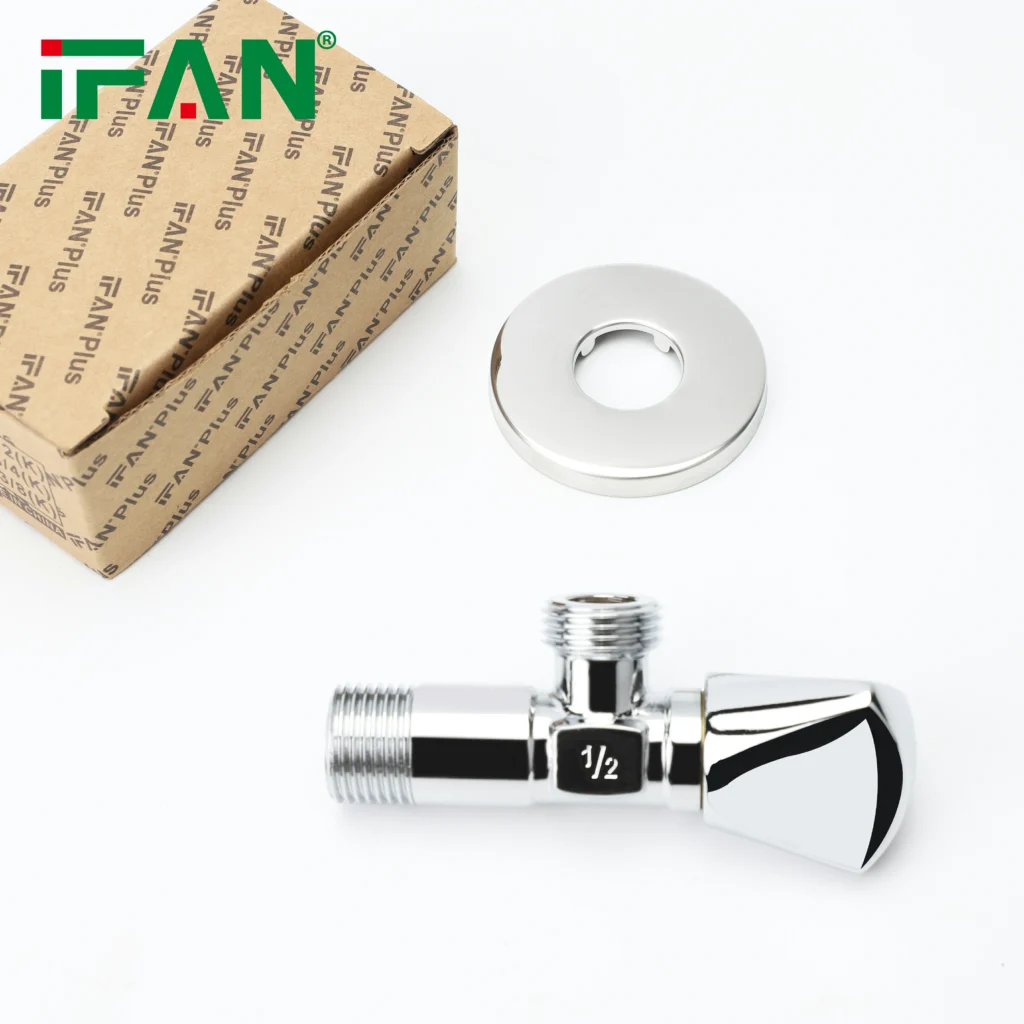Brass angle valves are crucial components in residential, commercial, and industrial water supply systems. Their unique 90-degree design allows for efficient flow control in tight spaces, making them indispensable in plumbing networks. Below is an in-depth look at their functions, benefits, and applications.
1. Primary Functions of Brass Angle Valves
A. Flow Control & Shut-Off
- Isolation of Fixtures: Used to stop water flow to sinks, toilets, and appliances (e.g., washing machines) for maintenance or repairs.
- Emergency Shut-Off: Allows quick water cutoff in case of leaks or pipe bursts.
B. Pressure Regulation
- Helps balance water pressure between main lines and branch connections.
- Prevents sudden pressure surges that could damage pipes or fixtures.
C. Directional Water Routing
- The 90-degree angle design enables smooth redirection of water flow in confined spaces (e.g., behind sinks or toilets).
2. Key Applications in Water Supply Systems
| Application | Purpose | Common Locations |
|---|---|---|
| Residential Plumbing | Connects water supply to faucets, toilets, & appliances | Under sinks, behind toilets, washing machine connections |
| Commercial Buildings | Controls water flow in high-usage areas (restaurants, hotels) | Bathrooms, kitchen supply lines, HVAC systems |
| Industrial Systems | Regulates water in machinery & cooling systems | Factories, processing plants, boiler feed lines |
| Municipal Water Distribution | Used in service lines & meter installations | Water meter connections, main supply branches |
3. Advantages of Brass Angle Valves in Water Systems
✔ Durability: Brass resists corrosion, scaling, and high temperatures better than plastic valves.
✔ Leak-Proof Design: Tight seals (washer or ceramic disc) prevent drips and water waste.
✔ High Pressure & Temperature Resistance: Suitable for both hot and cold water lines.
✔ Long Service Life: Unlike plastic valves, brass valves last decades with minimal maintenance.
✔ Lead-Free Compliance: Modern brass alloys (CW617N, CZ121) meet NSF/ANSI 61 standards for safe drinking water.
4. Comparison with Other Valve Types
| Feature | Brass Angle Valve | Plastic Angle Valve | Stainless Steel Angle Valve |
|---|---|---|---|
| Material Strength | High | Low | Very High |
| Corrosion Resistance | Excellent | Good (but degrades over time) | Exceptional |
| Temperature Tolerance | Up to 200°F (93°C) | Up to 140°F (60°C) | Up to 400°F (204°C) |
| Cost | Moderate | Low | High |
| Best For | Residential & commercial plumbing | Low-pressure systems | Harsh environments (chemicals, seawater) |
5. Common Issues & Maintenance Tips
Potential Problems
- Mineral Buildup: Hard water deposits can clog the valve over time.
- Seal Wear: Rubber washers may degrade, causing leaks.
- Thread Damage: Over-tightening can strip threads, leading to leaks.
Maintenance Best Practices
- Regular Inspections: Check for leaks or corrosion annually.
- Lubrication: Apply silicone grease to the stem for smooth operation.
- Washer Replacement: Swap out worn washers to maintain a tight seal.
- Avoid Over-Tightening: Use a wrench only for secure fitting, not excessive force.
Conclusion
Brass angle valves play a vital role in ensuring efficient, leak-free water distribution across various systems. Their durability, versatility, and compliance with safety standards make them a preferred choice over plastic or steel alternatives in most plumbing applications.
View more:https://www.ifanfittings.com/


